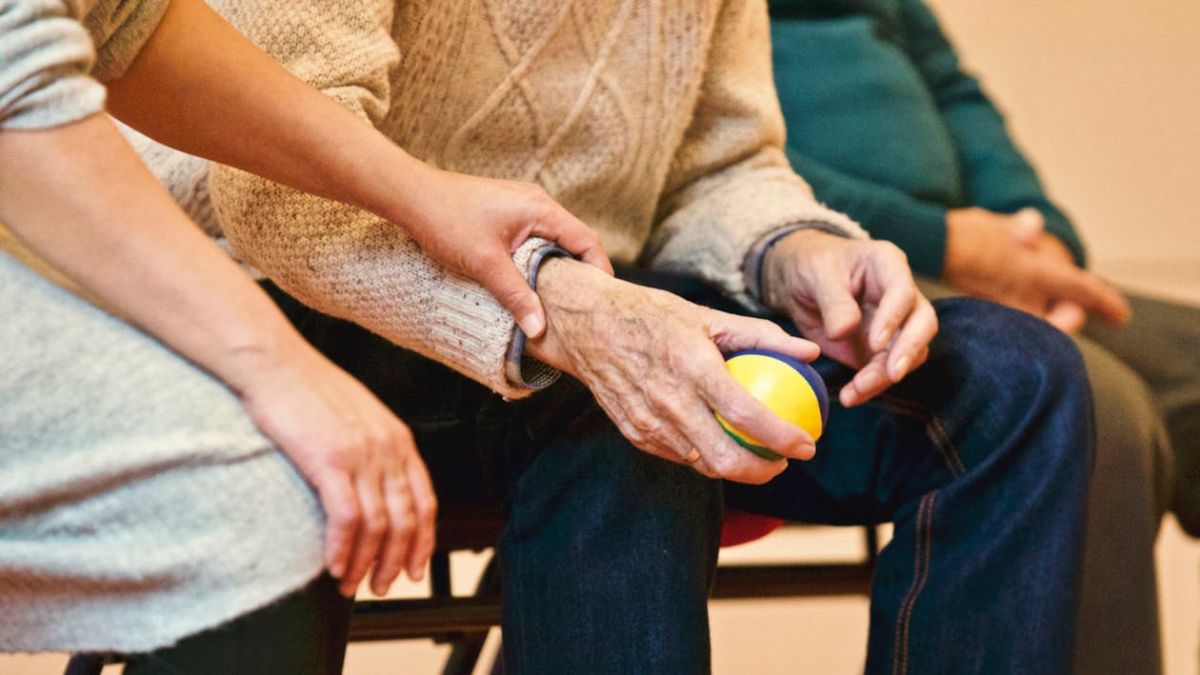Are you or a loved one having trouble with communication or social skills? Do you find yourself or a loved one struggling to see, hear or think properly? If your answer to either of these questions was yes, or if you may be experiencing a similar situation, you may want to consider occupational therapy (OT).
Occupation therapy is the use of meaningful activity such as taking care of oneself and one’s family, working, volunteering, going to school and more, to promote health, well-being, and people’s ability to participate in the important activities of life. OT is extremely useful in helping the individual to manage and cope in their daily activities more effectively. This form of therapy provides treatment programs that are tailored to the specific needs and abilities of the individual. This month is all about celebrating the impact that OT has had on healthcare, and the meaningful differences it makes to the lives of clients.
What’s an OT?
Occupational therapists (OTs) are health professionals who use performance-based, meaningful activities with specific goals to help people of all ages prevent, lessen, or adapt to disabilities. The activities may be as basic as bathing or dressing, or as complex as operating a computer with modified control switches. Today’s occupational therapists are working in clinical practice, community outreach, education, research, private practice, and many other diverse areas.
Occupational therapists are trained to work with a variety of diagnoses including but not limited to:
- traumatic brain injury
- autism spectrum disorder
- stroke
- cerebral palsy
- burns
- fractures
- spinal cord injury
- orthopedic impairments
- sensory processing disorders
OTs are experts in activity analysis; identifying personal and environmental strengths and barriers to select the appropriate match of activity demands and skills to achieve optimal outcomes for their patients. An OT can help clients maintain, regain, or improve their independence using evaluations and intervention plans that reflect the needs of the whole person. OTs work with people of all ages and social groups as well as in a variety of settings, from hospitals and outpatient clinics, to schools, nursing homes, and home health services.
What does an OT do?
What sets Occupational Therapists apart is their integrated training in using techniques that help patients resume the activities they enjoy doing (or need to do for work). Integrated In this case means that OTs focus on the body, mind, spirit and emotions when diagnosing and treating a patient.
Successfully administering these techniques often requires specialized equipment. A few techniques and devices that help Occupational Therapists with their treatment and training programs include:
- Spirometers: One of the most essential tools in an OT’s arsenal, these devices measure the air capacity of the lungs. Occupational therapists ask patients to perform maximum inspiration (inhale), and then to hold the breath for 5-10 seconds. This tool has helped patients live life to the fullest extent by detecting breathing problems and helping their lungs build strength. As a result, the patient can enjoy life beyond their original expectations.
- Physical activity: Physical activity can aid patients in learning techniques to manage physical and mental limitations. An OT uses physical activity to help patients push themselves beyond their comfort zones. This process allows the patient to discover their abilities and strive to improve. Even the most physically exhausted patients find the use of physical activity helpful in creating a new normal in life at any age.
- Home visits: Home visits allow the OT to help a patient at the heart of their environment, making real-life adjustments to the way they live, work, and function overall. Here, the OT can see what parts of daily life can change and what pieces need adaptations to make life more accessible. Depending on the needs of the patient, OTs may find home visits to be one of the most useful tools in their arsenal.
- Lifestyle changes and adaptations: Small changes, such as an electric can opener or toothbrush, can make daily functions more accessible for some patients. Those with life changes due to strokes or cardiovascular disease may require the use of tools that can help compensate for the strength in their hands or body they may no longer have. Sometimes more significant changes may be needed, such as installing a ramp or a chair lift in a client’s home.
The best OTs tailor their approach to each individual’s unique goals and objectives based on the activities they perform in daily life. Usually, an OT spends time designing specific treatment protocols for patients that mimic the activities they ultimately want to participate in. This process can even take place in settings outside the clinic or in the patient’s home. The goal is to ensure that the patient is able to transition from the therapeutic exercises to the real-world activities easily.
PT vs. OT
Physical therapy and occupational therapy both help improve a person’s quality of life, but there are differences. Physical therapy (PT) helps with:
- Pain
- Strength
- Joint range of motion
- Endurance
- Gross motor skills (large-muscle movements made with the arms, legs, feet, or entire body)
Occupational Therapy helps with:
- Fine motor skills (small-muscle movements made with the hands, fingers, and toes, such as grasping)
- Visual-perceptual skills
- Cognitive (thinking) skills
- Sensory-processing problems
Who needs an OT?
OTs work with adults and children of all ages who have a wide range of conditions. Most commonly, they help those living with mental health conditions, or physical or learning disabilities. Since everyone is different, so is the reason they may have an OT. Some reasons why someone might need an OT include:
- Birth injuries or defects
- Traumatic injuries to the brain or spinal cord
- Learning problems or developmental delays
- Mental health or behavioral problems
- Arthritis or broken bones
- Autism
- Stroke
- Poor vision or balance
- Severe burns
- Diabetes
Occupational therapy is great for those who are unable to take care of themselves, move easily, or perform a normal function in school or at work because of illness, pain, injury, or disability. OTs specialize in identifying performance-based cognitive impairments, which range from subtle ones like autism to obvious ones like severe burns. OTs focus on treating these impairments because they have the potential to compromise the safety and long-term well-being of patients, especially those who are elderly.
Summing it up
Occupational therapists perform an important role in society by supporting public health and enabling people to complete daily tasks and return to their careers. They play a crucial part in a patient’s recovery and rehabilitation process. While doctors may prescribe medication to help a patient manage pain, an occupational therapist will work with that same patient to help them handle their everyday tasks without pain flare ups. If you think occupational therapy could help you or a loved one visit the True Care website or contact us at (718) 854-8783 to learn more about our OT services for private duty nursing, and private clients.
Occupational therapy month is a great time to increase community awareness of the benefits that occupational therapists and occupational therapy can have on your health and well being. From providing preventive services to delivering direct therapy, occupational therapists are a vital part of healthcare services provided to patients every day across the country.






